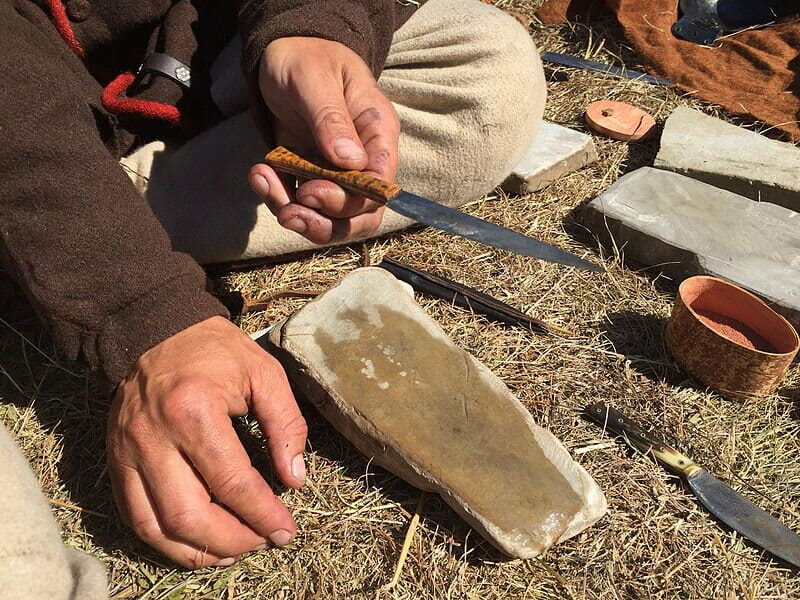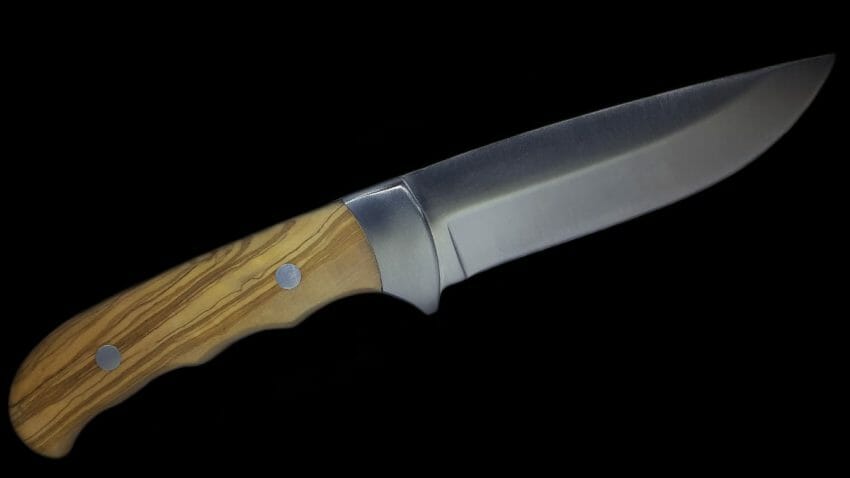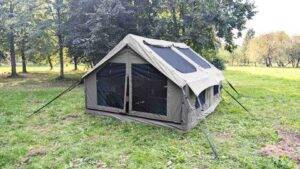
When going either hiking or camping, there are certain tools that you can’t leave without. A lot of backpackers I know, love to bring a portable knife with them. One that’s not too big, such as a boot knife, which you can carry easily. But a knife is only as good as its blade’s sharpness. Venturing out in the woods with a blunt knife is almost like bringing a knife to a gunfight, you may end up getting hurt badly. A survival knife helps you skin fresh catch, cut food, chop twigs, shape wood to fashion tools, defend yourself against predators, erect a shelter, cut and splice twine, etc. With a blunt blade, you may find yourself seriously handicapped and at the mercy of the elements in unfamiliar surroundings.
Experienced campers know that a blunt-edged knife is unsafe. It demands additional force and can easily lead to accidents. It’s critical that you are always in a position to sharpen your knife outdoors.
The easiest way to keep the blade sharp at all times when outdoors, is to carry the necessary tools in your backpack. The right tools with the correct sharpening technique will allow you to own a functional knife at all times.

Tools to Sharpen a Knife in the Outdoors
A small whetstone in your backpack with serve you well. Technically, any smooth, hard material can be used as a whetstone. The idea is to grind the blade on the whetstone to remove irregularities and smoothen chips.
Arkansas stone is popular with knife owners and is an excellent blade sharpening stone. These stones are a form of Novaculite and consist of microcrystals of quartz. You don’t need a honing liquid with these stones. They work fine even when used dry. Arkansas stones are graded according to their hardness. A soft Arkansas stone is the most commonly preferred type. Harder stones are used for blades with finer edges. This is the general principle applicable to all kinds of whetstones, and just Arkansas Stones.
Whetstones are ideally used with water. Water helps regulate the friction, and is a better lubricant than oil because oil can clog the surface of a whetstone. You need only patience and some elbow grease to sharpen a blade on a whetstone. Take care to move the blade along the angle at which the original edge is.
When backpacking with a whetstone, secure it such that it does not crack or chip when you put the backpack down or step on it accidentally.
If you have a whetstone that has served you well over time, and you’ve grown used to it then take care to keep it clean and try not to drop it. Over time, whetstones develop a curvature along the middle. The stone can be ground back to a flat surface with a lapping plate.
Ceramic honing stones are versatile, easy to carry, and are available in varieties as well as choice in grit, i.e. coarse, medium, and fine grit.
Ceramic honing blocks are durable and can be used without lubricant of any kind. Choice in grit is 600, 1200, and 2000. Ceramic water blocks are made using pieces of ceramic held together using a bonding material. Ceramic water stones are extremely durable and do not need to be soaked in water prior to use. You can buy ceramic water stones up to 30,000 grit.
Ceramic sharpeners are also available in the form of rods inclined at a particular angle, so that when you pass the blade between the rods, both edges can be sharpened at the same time. These rods; however, are better used for maintaining a knife’s edge rather than sharpening a blunt one.
Pull through sharpeners or V-Sharpeners are an extremely handy tool to carry. They consist of a v-shaped notch lined with tungsten carbide. All you need to do is to pull the knife through the notch at a steady pressure and speed. These sharpeners are an excellent tool to have in your camping kit because they can easily repair small notches. Care; however, must be taken to ensure that the blades are sharpened at the correct angle without applying too much force.
Butcher’s steel is yet another commonly used and very handy to carry sharpening tool. The ridged and diamond coated varieties are excellent for sharpening blades, while the plain steel rod realigns the blade, which, in effect, adds to its sharpness.

Quick Tips on Sharpening Knives in the Outdoors
Know if you can use the sharpening tool without a lubricant. Mineral-oil based lubricants are easily available, and they keep the whetstones free from getting clogged with dirt. Clogged stones can crack over time. Lubricants keep both, blade and stone cool and may actually prevent the blade from getting permanently damaged.
Every knife has a bevel angle, i.e. the angle of its blade’s edge. It varies with the function. Hold the blade at the correct angle when sharpening it on a whetstone or ceramic stone. Ask the seller about the blade’s bevel angle, check online, or if the knife is accompanied by a booklet, then see if this information is there.
There’s technique involved in sharpening a blade so that it does not get damaged or its bevel angle does not change. It’s a good idea to hone your knife sharpening skills by using a sharpening guide. It’s a useful device for beginners. It holds the knife steady and at the correct angle so that it can be sharpened properly. The act of sharpening a knife may appear physical labor but there’s a fair bit of skill involved.
Of course, you can always get a professional to sharpen a blade for you. But if you wish to master survival skills, then you don’t have a choice but to learn how to sharpen a knife so that when you’re in the outdoors you can put the skill to use.
If you’re grinding the blade correctly on the whetstone, you’ll notice metal burrs accumulate on the edges of the knife. These must be wiped away.
If you’re caught in a situation where you don’t have a whetstone and you need to sharpen a dull knife in the outdoors, then look around for a smooth stone. Streambeds are a good place to find some smooth stones that you can use as makeshift whetstones.







